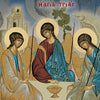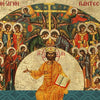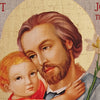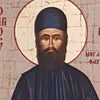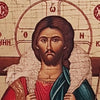The footsteps of the Apostle Paul The route in the history of religion

One of the most famous and certainly most important routes regarding its religious and historical importance is the one followed by the Apostle Paul in Greece. Paul, one of the most significant preachers of the Christian religion, a worthy missionary for his preachings and his work, also known as the "Apostle of the Nations", spread Christianity by crossing Greece, having as starting point Samothrace and final destination Corinth.
The route still fascinates to date every believer and every historian and is considered an ideal route for an excursion, a pilgrimage and for meditation. The three-aisled early Christian basilica located at the port of the ancient city of Samothrace was built with ancient architectural elements, in memory of Apostle Paul’s landing on the island and his teachings. In the winter of 49 A.D. and after a vision he had, the Apostle arrived at Neapoli (the ancient name of the city of Kavala).
From there he went to the city of Philippi, together with Silas, Timothy, and Luke the Evangelist, where Silas and Paul were arrested, beaten with canes and imprisoned. A terrible earthquake opened the doors of the prison and the two Apostles left for Thessaloniki, passing through the cities of Amphipolis and Apollonia. In Thessaloniki, the conversion of many Greeks led to the establishment of a Church, which caused a lot of disturbances and forced Silas and Paul to leave the city during the night. At the Vlatadon monastery which was built later, there is a spring, known as the Holy Spring of the Apostle Paul spring, where the Apostle stopped drink and cool himself.
On his way to Athens, Paul stopped in Veria, where he found an organized Jewish synagogue, friendly and ready to hear the words of the Apostle. Many men and women were converted, and the point where the Apostle preached the Gospel is known as “Apostle Paul’s Podium”. In 51 A.D., Paul arrives in Athens and is taken to Arios Pagos (a hill to the west of the Acropolis of Athens) to speak freely, formally and in detail for what he believed.
According to reports, it is then that Dionysius the Areopagite became a believer. The route of the Apostle in Greece ends in Corinth, where he meets Aquila and Priscilla, who both knew about Jesus. He taught Jews and Greeks, however, he raised the contradiction mainly of the Jews who were not convinced by his words and forced him to leave. Today, the Apostle Paul is the patron saint of the city.
-
Posted in
Theological Issues

